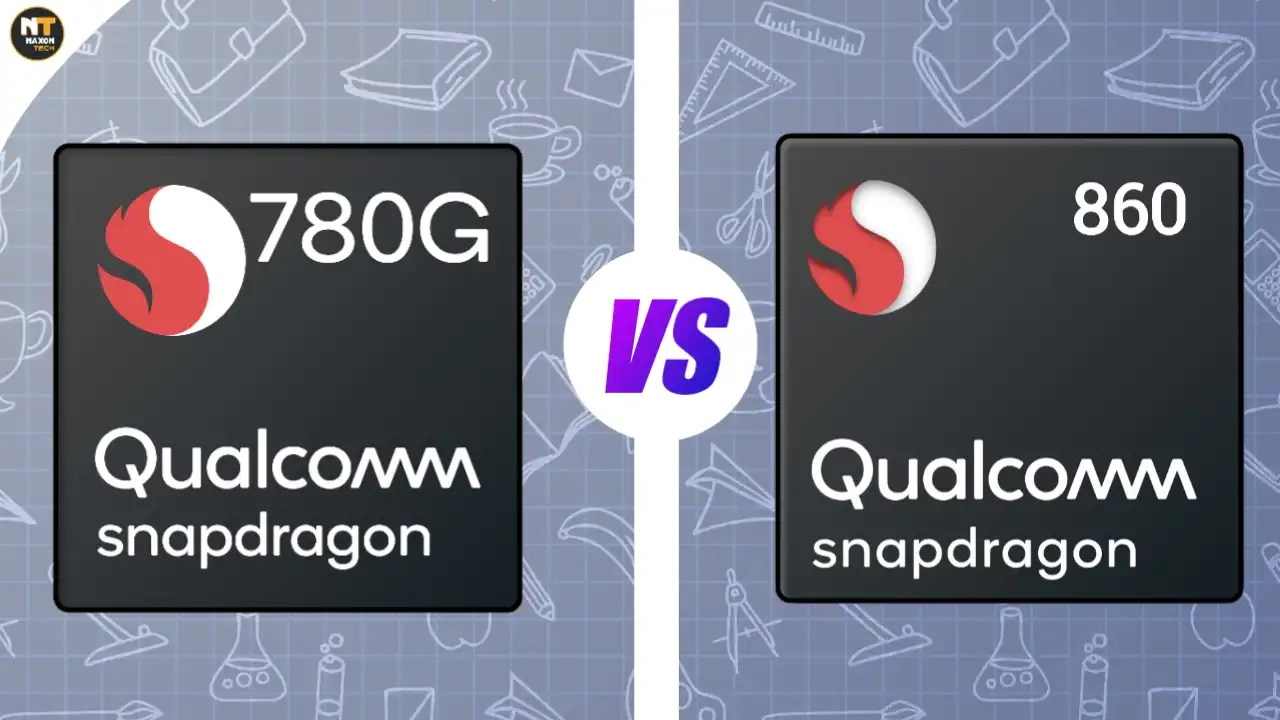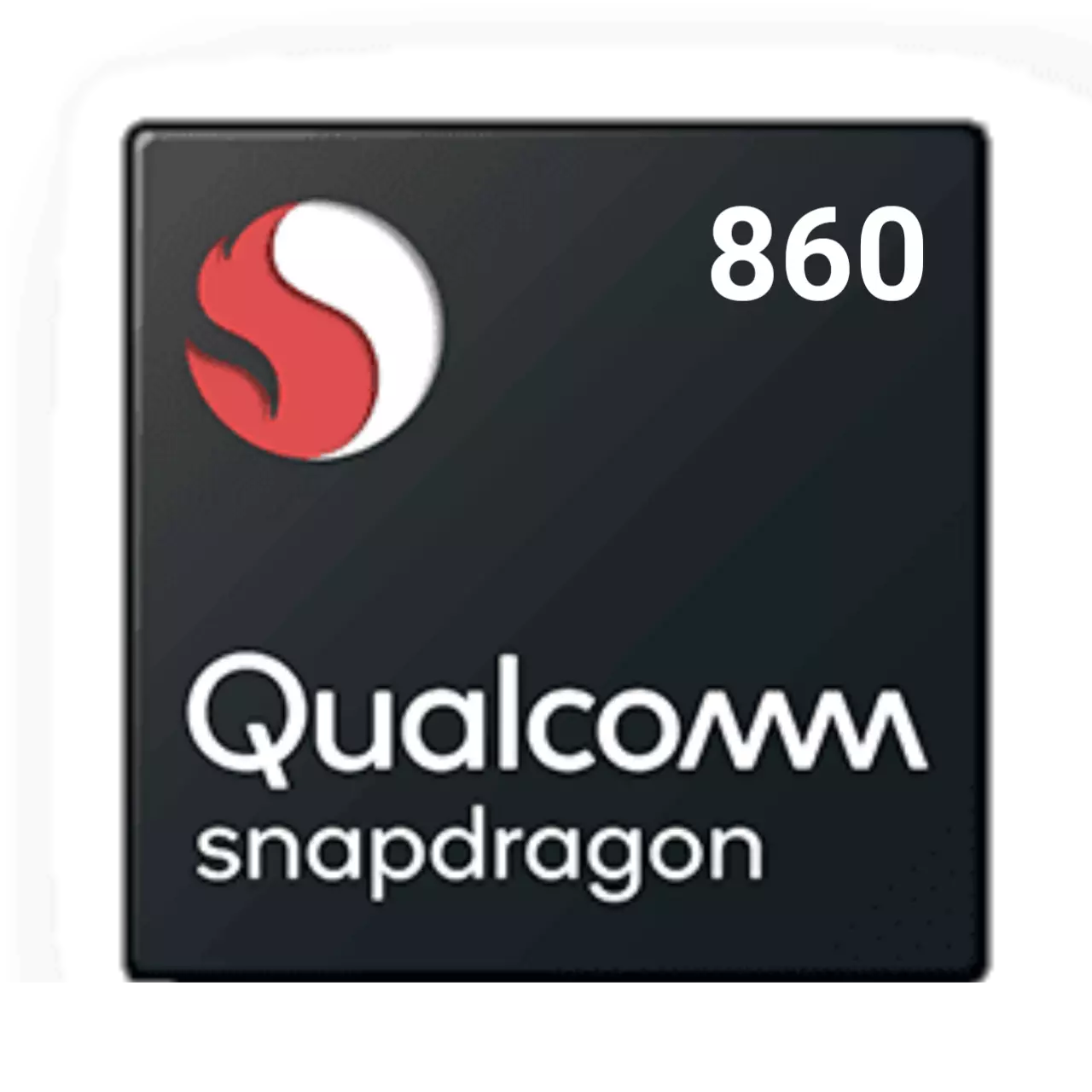 Snapdragon 780G vs Snapdragon 860
Snapdragon 780G vs Snapdragon 860
Snapdragon 780G vs Snapdragon 860, the comparison between the upper mid-range chipset with the flagship chipset. The Qualcomm Snapdragon 780G is revealed a few days ago while the Snapdragon 860 is another name for Snapdragon 855+ that revealed back inMarch 2019. Let’s how the newly launched chipset can compete against the flagship chipset.
Snapdragon 780G vs Snapdragon 860 – Key Differences
- The Qualcomm Snapdragon 780G is built on a 5nm fabrication process while the Snapdragon 860 is based on 7nm fabrication that means the SD 780G is more power-efficient.
- The newly launched SD 780G has new Cortex A78 cores for high performance compared to Cortex A76 cores on SD 860.
- But it is notable that the Snapdragon 860 has a higher clock speed comparably.
- Snapdragon 780G has LPDDR5 RAM support while the Snapdragon 860 doesn’t.
- The Snapdragon 860 has the support of a 4k @60Hz on-device display.
- The SD 780G comes with the new ISP means better camera support compared to SD 860.
- The Adreno 642 GPU that comes along with Snapdragon 780G is better than Adreno 640 on Snapdragon 860 and also Adreno 642 comes with updatable drivers support while Adreno 640 doesn’t have updatable drivers support.
- The SD 780G comes with the latest Bluetooth 5.2 support while the SD 860 comes with Bluetooth 5.0 support.
Snapdragon 780G vs Snapdragon 860 – Specifications
Processor

Snapdragon 780G

Snapdragon 860
CPU1x Cortex-A78 cores @2.4 GHz
3x Cortex-A78 cores @2.2 GHz
4x Cortex-A55 cores @1.9 GHz1x Cortex-A76 @2.96 GHz
3x Cortex-A76 @2.42 GHz
4x Cortex-A55 @1.8 GHz
GPUAdreno 642Adreno 640
ConnectivitySnapdragon X53 5G Modem
3.3 Mbps Downlink speed
1.5 Mbps Uplink Speed ( expected)Snapdragon

Downlink: Up to 2.0 Gbps
Uplink: Up to 318 Mbps
Snapdragon

mmWave: 800 MHz bandwidth, 8 carriers,
2×2 MIMO
Sub-6 GHz: 100 MHz bandwidth, 4×4 MIMO
5 Mbps Downlink speed
2.1 Mbps Uplink Speed ( expected)
Fabrication Process5nm7nm
Memory ControllerLPDDR5@2750MHz
LPDDR4x@2133Mhz
up to 16GBLPDDR4x @2133 MHz
up to 16GB
StorageUFS 3.1 ( Max )UFS 3.1 ( Max )
DisplayFHD+ @ 144 Hz4K @ 60 Hz
FHD+ @ 120 Hz
Wi-Fi802.11a/b/g/n/ax, Wi-Fi 6E802.11a/b/g/n/ac, 802.11ax-ready
BluetoothBluetooth 5.2Bluetooth 5.0
CameraQualcomm Spectra

3 x 25MP ( with ZSL )
64MP + 20MP ( with ZSL )
1 x 84MP ( with ZSL )
up to 192MP single cameraSpectra

1 x 48MP @30fps with ZSL
2 x 22MP @30fps with ZSL
up to 192MP single camera
Videoup to 4k video captureup to 4K video capture
NFCsupportedsupported
LocationGPS, Glonass, BeiDou, Galileo, QZSS, NavICGNSS, GPS, GLONASS, Beidou, Galileo,
QZSS, and SBAS
Snapdragon 780G vs Snapdragon 860 – Benchmarks
As per some reports, the Snapdragon 780G powered Mi 11 youth Edition grabs a score of 693 in single-cores and 2058 in multi-cores on Geekbench 5 and a 5,00,000+ Antutu score. While the Snapdragon 855+/860 chipset on the Asus Rog Phone 2 is able scores 728 in single-cores and 2520 in multi-cores and 5,06,832 ANTUTU scores. The Snapdragon 780G scores are not official scores but the Snapdragon 780G can be considered similar to Snapdragon 860 in terms of performance.
Snapdragon 780G vs Snapdragon 860 – Conclusion
The Snapdragon 780G is the latest among them and has advantages over the Snapdragon 860 as it supports latest version of Wi-Fi, Bluetooth, ISP, and more. But in terms of performance Snapdragon 860 is slightly better than SD 780G. However, the performance becomes more clear as we get the hands on with the Poco X3 Pro and Xiaomi Mi 11 Youth Edition and compare them side by side.
The performance gap between these chipsets is very low so if you get a SD 780G powered smartphone at a cheaper price go with that and if you are getting the SD 860 powered device at a cheaper then go for that device, it totally depends on the pricing and how the company has optimized the smartphone and chipset.
What’s your opinion on these chipsets must comment down below and Do you like the pricing of newly launched poco X3 pro? if you like it then comment down below or else comment down the reason why you haven’t like the pricing.
